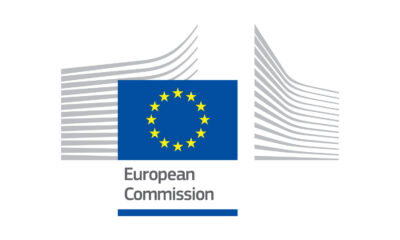Travel
Israel: Warning to avoid all but essential travel as more airlines suspend flights
Tel Aviv international airport is still in operation, but many airlines have cancelled or diverted services.
Israel’s war with the fundamentalist group Hamas continues to escalate after militants sprung a surprise attack on the country from Gaza on Saturday.
As a popular holiday destination and the source of much business travel, many travellers are wondering whether it is still safe to travel to Israel, or how to get out if they wish to leave.
Read on for full details on advice from European governments, which airlines are still operating flights and how to get assistance.
What is the latest situation in Israel?
Rockets have been fired into Israel hitting cities including Tel Aviv and Jerusalem, and armed terrorists are present in the country.
The latest death toll stands at 1,300 Palestinians in Gaza, according to health officials, and more than 1,300 Israelis, report Israeli medical services. 338,000 Gazans are now displaced, says the UN.
Authorities have also confirmed the deaths of nine US citizens while 10 British citizens are feared dead or missing.
Is it safe to travel to Israel?
The UK’s Foreign, Commonwealth and Development Office (FCDO) has updated its travel guidelines for the affected region advising against all but essential travel to Israel and the Occupied Palestinian Territories (OPTs).
This means holiday companies with clients in the zone must bring them back as quickly as possible and halt all future trips until the advice is downgraded.
In particular, the FCDO now advises against all travel to:
- Gaza
- the Sheba’a Farms and Ghajjar
- Within 500m of the border with Lebanon (the ‘Blue Line’) east of Metula, including the northern edge of the town and and within 500m of the border with Syria (the ‘Alpha Line’)
- The area close to the border with Gaza that includes the following: the area southwest of Ashkelon; the area south of route 35 and west of route 40 as far as Tlalim, not including Be’er Sheva; the area west of Be’er Sheva; the area north of route 211
The FCDO also warns that incidents have occurred in Tel Aviv, Be’er Sheva, Hadera, Jerusalem and the Old City (particularly at and around Damascus Gate, Herod’s gate, Lion’s Gate and the Chain Gate), Nablus, Jenin, Hebron, the Jordan Valley, at Israeli checkpoints, near settlement outposts, and around Palestinian refugee camps.
You should exercise particular caution when visiting these areas and only travel if essential.
Ireland’s Department of Foreign Affairs (DFA) similarly advises travellers to avoid all non-essential travel to Israel as “ongoing attacks pose a significant security risk.”
“Please avoid all travel to Southern Israel, and continue to exercise extreme caution within Israel and the occupied Palestinian territory, including East Jerusalem,” the DFA says.
The US State Department has increased its travel advisory for Israel, asking citizens to “reconsider travel.”
“Terrorist groups, lone-actor terrorists and other violent extremists continue plotting possible attacks in Israel and the West Bank and Gaza,” the State Department said in the advisory.
“Terrorists and violent extremists may attack with little or no warning, targeting tourist locations, transportation hubs, markets/shopping malls, and local government facilities.”
Hotline and assistance for tourists in Israel
Israel’s Ministry of Tourism says they are “monitoring the situation and are committed to ensuring that all tourists visiting Israel are safe and informed.”
To help with this, they have set up a ‘tourist hotline’.
“Israel’s Ministry of Tourism will provide all necessary assistance to those who need it and is operating a tourist hotline via WhatsApp for tourists to stay informed on the situation as it evolves.”
The phone number for WhatsApp inquiries is +972-55-972-693 and the email address is: virtual@goisrael.gov.il
Visitors can also dial 104 for information and advice in several languages or contact Home Front Command on WhatsApp and SMS on +972 (0) 52-9104104.
What if I have a holiday booked in Israel?
It is imperative that you check your government’s advice on travel to Israel before leaving for your trip.
For instance, if you choose to travel to Israel from the UK now that official advice warns against visiting, you won’t be protected by standard travel insurance policies.
If you have booked a package holiday to Israel, you can cancel and receive a full refund because of the ‘no-go’ travel warning.
Are there flights to and from Israel?
Tel Aviv international airport – the main travel hub in the country – is still in operation, but many airlines have cancelled or diverted services.
US carriers United Airlines, Delta Airlines and American Airlines have suspended flights while European operators including Lufthansa, AirFrance and Finland’s Finnair have also been halted.
British Airways confirmed on Wednesday that it was cancelling all scheduled flights to Tel Aviv’s Ben Gurion airport after it diverted a flight back to London citing security concerns.
EasyJet cancelled flights to Tel Aviv on Sunday and Monday and has said it is adjusting service times over the next few days.
“Any customers affected by cancellations are eligible for a refund, voucher, or a free of charge transfer to a new flight,” a spokesperson from the airline said.
Wizz Air flights en route to Israel when the offensive began were redirected to Larnaca, the main airport on the island of Cyprus. Flights to and from Tel Aviv have been cancelled until further notice.
Portugal’s TAP suspended flights on Monday and is offering refunds or rescheduling at no additional cost.
Dubai’s Emirates airline has announced it is cancelling all services to Ben Gurion until 20 October.
Israel’s El Al airline says it is operating in accordance with the instructions of security forces and that flights are running “as scheduled”.
What should you do if you are currently in Israel?
The FCDO warns that international borders – both air and land – in Israel and OPTs could close at short notice.
British travellers are being “strongly encouraged” to register their presence with the FCDO.
“We can then share important updates, including information to support you to leave the country. Fill in the form for every member of your family or group who is a British national,” the FCDO added.
If you are currently in Israel, your travel insurance still covers you until you manage to leave the country.
You should check with your airlines and travel insurers before travelling. You are advised to consult Israeli Home Front Command for more information: www.oref.org.il/en or call 104 if you are in Israel.
Travel
Barcelona to create special selfie zone to curb tourist chaos at Sagrada Familia
In front of Barcelona’s Sagrada Familia, gaggles of tourists pose for selfies. They crowd the pavement before the famous Gaudí-designed basilica and even step into the road for a better angle.
This quest for an Instagram-worthy photo comes at the expense of residents’ daily lives.
For over a decade, locals have lambasted the crowds of visitors that obstruct the passage of pedestrians and hold up traffic around the religious site.
Barcelona city authorities have now unveiled plans to corral selfie-snapping visitors into a dedicated area to ease the congestion.
As one of Spain’s hotspot destinations, it is the latest measure from officials to regulate tourism in the city.
Sagrada Familia selfie space will ‘reconcile tourists and the neighbourhood’
Barcelona city council has announced it will construct a special zone beside the Sagrada Familia where visitors can take a breather – and a selfie – before entering the church.
The 6,200-square-metre ‘anteroom’ will be located between the Nativity façade of the basilica and Plaça Gaudí on Carrer de la Marina.
Until recently, Plaça Gaudí had been exploited by tourists for a TikTok trend that caused considerable disruption.
It involved visitors balancing their phones on metro escalators to film themselves while the iconic monument appeared in the background. The trend led to tourists clogging station exits and was eventually banned.
“The new project helps to resolve a space where it is difficult to reconcile uses between visitors to the temple and the neighbourhood,” the city council said in a press release.
Construction on the gathering zone is scheduled to begin after the summer and be finished by April 2026 to coincide with the 100th anniversary of Gaudí’s death.
The €2.7 million project is part of a wider €15.5 million plan to improve infrastructure and visitor management around the sacred site.
The Sagrada Familia attracts 4.7 million visitors a year and is the second most visited site in Spain, after the Alhambra in Granada.
‘Tourism needs to be serving the city’s model’
Now drawing 32 million visitors a year, Barcelona has previously introduced several measures to curb overtourism.
In 2024, the city launched a €44 million plan to regulate crowds in 16 tourist hotspots by deploying more cleaners and police officers to maintain order and safety.
Last July, the city abandoned its ‘Visit Barcelona’ slogan of 15 years in favour of the new ‘This is Barcelona’, marking a rebranding which shifts the destination away from mass tourism.
Barcelona has also pledged to ban short-term apartment rentals to tourists by 2028 and cap cruise ship disembarkations.
Speaking after the announcement last year, the city’s mayor Jaume Collboni said the decision came in response to the risk of Barcelona becoming a “theme park” devoid of residents.
“Tourism needs to be serving the city’s model, not the opposite,” he added.
Travel
You’ll need to book via app to visit these spectacular beaches in Sardinia this summer
One beach on the Italian island of Sardinia will only be accessible to visitors by booking through an app this summer.
Crescent-shaped Tuerredda beach has already been capping visitor numbers at 1,100 per day since 2020.
The new digital measure, expected to be in place by July, aims to ease the strain on local resources and infrastructure.
Many of Sardinia’s spectacular beaches are protected from overtourism with similar restrictions, with transgressors facing fines of up to €3,500.
The island’s coastline is renowned for its pristine stretches of sand and is frequently voted as one of the top places in Italy for a seaside holiday.
But it has also been suffering due to disrespectful visitor behaviour and overcrowding.
Here are all the places where the island has limited access or introduced regulations to safeguard its most popular beaches.
Spiaggia Rosa: €3,500 for stealing sand
The Spiaggia Rosa, located on the outlying Budelli island, draws thousands of tourists a day in summer to admire its magnificent pink sand. But visitors can only see the picturesque sands from a distance on a boat.
Because of the beach’s fame, it has been closed off to visitors since the mid-1990s after its coveted sand began to disappear. The local government took action after tourists were found to be smuggling kilos worth away as souvenirs.
Local authority regulations now mean walking on the beach will land you a €500 fine, while anyone caught stealing the sand will have to pay up to €3,500.
La Maddalena, Cala Coticcio and Cala Brigantina are capping visitor numbers
In the archipelago of La Maddalena, two beaches now have restricted access. Last year, only 60 people a day could visit Cala Coticcio and Cala Brigantina over the summer.
Travellers needed to book their slot online and pay €3 per person to access the beaches with a guide.
The visitor limit and access fee have not yet been announced this year, but visits will likely need to be booked by contacting a local guide directly like last year.
Several other beaches around the island now only allow access to a limited number of visitors.
In the north, Cala Brandinchi and Lu Impostu will limit numbers to 1,447 and 3,352 respectively between 1 June and 30 September. Visitors also need to book via the San Teodoro app or on the dedicated website.
At Cala Mariolu, 700 people are allowed per day between June and early November.
In Villasimius in the southeast, beachgoers heading to Punta Molentis, Riu Trottu and Portu Sa Ruxi are required to pay to access the car park. Each vehicle costs €10 with an additional €1 for each passenger. Cyclists and pedestrians pay €3.
Staff are stationed at car parks and beach access points to check tickets.
Beach towels banned on Pelosa beach
On the west coast, Stintino’s famed Pelosa beach is now only open to a limited number of visitors per day. A maximum of 1,500 people are allowed to access the beach daily. Last year, visitor numbers reached as many as 4,000 on some days.
Those looking to sunbathe on Pelosa beach need to book a ticket costing €3.50. Regulations also state that visitors can only use beach towels if they place mats underneath them, which trap less sand.
Ogliastra: Time limits for beachgoers
In Ogliastra on the east coast, 300 people a day are permitted on Cala Birìala and beachgoers who arrive by boat can only stay for 90 minutes.
Similarly, visitors to Cala dei Gabbiani are also capped at 300. Last year, visitors had to leave after two hours.
How is Italy clamping down on overtourism?
Sardinia joins several other popular tourist destinations that have introduced restrictions as a result of overcrowding.
Venice now has a booking system and fee to visit the city. In the Italian Riviera town of Portofino, tourists lingering too long and blocking streets face fines of €270.
Travel
Italian rail operator reveals €1bn investment to tackle Eurostar monopoly
Italian state railway group Ferrovie dello Stato (FS) on Tuesday revealed plans to launch a high-speed rail service between Paris and London through the Channel Tunnel.
The service, set to be launched by 2029, will challenge Eurostar’s long-running monopoly on the route between the UK capital and mainland Europe.
FS said that the project, with an earmarked €1 billion, would be carried out in partnership with Spanish firm Evolyn, led by the Cosmen family.
Evolyn announced back in 2023 that it wanted to launch a service between Paris and London. The details of its partnership with FS are not yet finalised.
“This investment is a decisive step forward in FS Group’s vision of building a more integrated, competitive and sustainable European rail network,” Stefano Antonio Donnarumma, FS Group CEO, said in a statement.
“High-speed rail networks are the backbone of efficient and environmentally friendly mobility, and by expanding our presence on key corridors, we are not just investing in infrastructure and innovation, but also in the future of European transport,” he added.
The link between London and Paris could be extended to services via Lille, Ashford, Lyon, Marseilles and Milan, said FS on Tuesday.
The announcement comes after Virgin Group, owned by billionaire Richard Branson, also made a bid to challenge Eurostar’s monopoly last month.
Virgin Group told the Financial Times that it intends to raise £700 million (€820mn) in debt to finance a high frequency service from London to Paris and Brussels, with plans to later extend the route to Amsterdam.
The firm’s plans to run trains along these routes were originally complicated by a spat over an east London rail depot, the only available space to park high-speed cross-Channel trains.
After Eurostar claimed that it had used all available spots, Evolyn and Virgin appealed to the UK’s rail regulator.
In its statement released on Tuesday, FS said that it had received the green light from the UK’s Office of Rail and Road to use the Temple Mills depot.
FS added that it had obtained the necessary licenses and permits in France, and that it was working to increase capacity at St. Pancras. It said that the latter task was “at an advanced stage”.
The Italian firm already runs a high-speed service between Milan and Paris, as well as intercity trains within France.
FS Group also has an established presence in the UK, where it has been present since it acquired train operator c2c in 2017.
Alongside Virgin, FS, and Evolyn, firms Gemini Trains and Deutsche Bahn have expressed interest in accessing the Channel Tunnel route.
Critics of Eurostar’s monopoly argue that increased competition would bring ticket prices down and improve service quality.
-

 EU & the World5 days ago
EU & the World5 days agoWho Is Buying TikTok? What Might Happen to the App
-

 Politics5 days ago
Politics5 days agoThe transformative power of AI
-

 Politics5 days ago
Politics5 days ago6 tips to spot and stop information manipulation
-

 Politics5 days ago
Politics5 days agoWinners of 2025 EU prize for women innovators announced
-

 EU & the World5 days ago
EU & the World5 days agoWill TikTok Be Banned? Latest Updates on the U.S. Ban
-

 EU & the World6 days ago
EU & the World6 days agoMyanmar & Thailand Earthquake: Updates on Damage, Deaths, and More
-

 Sports4 days ago
Sports4 days agoSerie A 2024-2025: Torino-Verona, the likely lineups
-

 EU & the World6 days ago
EU & the World6 days agoInside the glam – Celebrity style moments that ruled the red carpet









